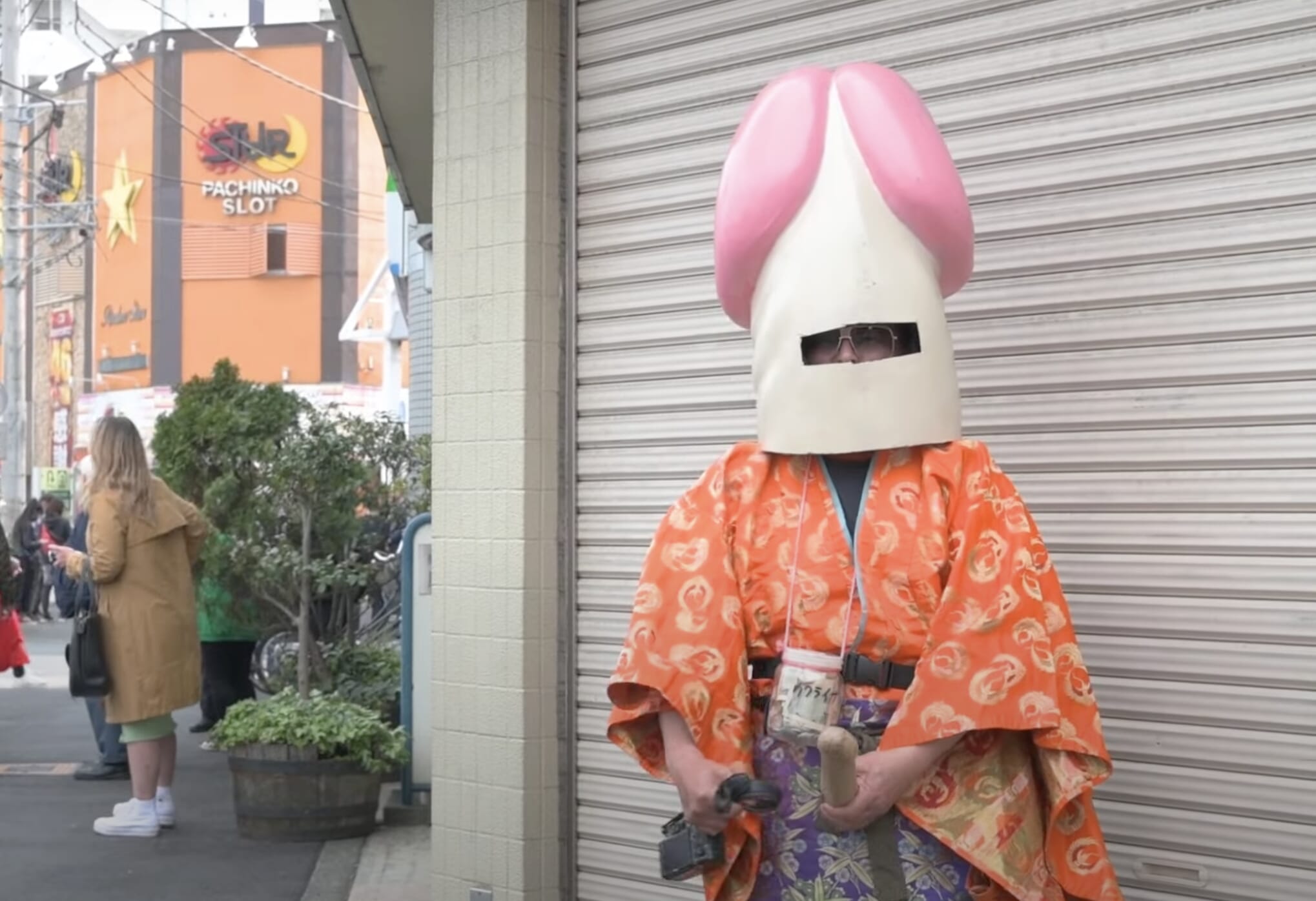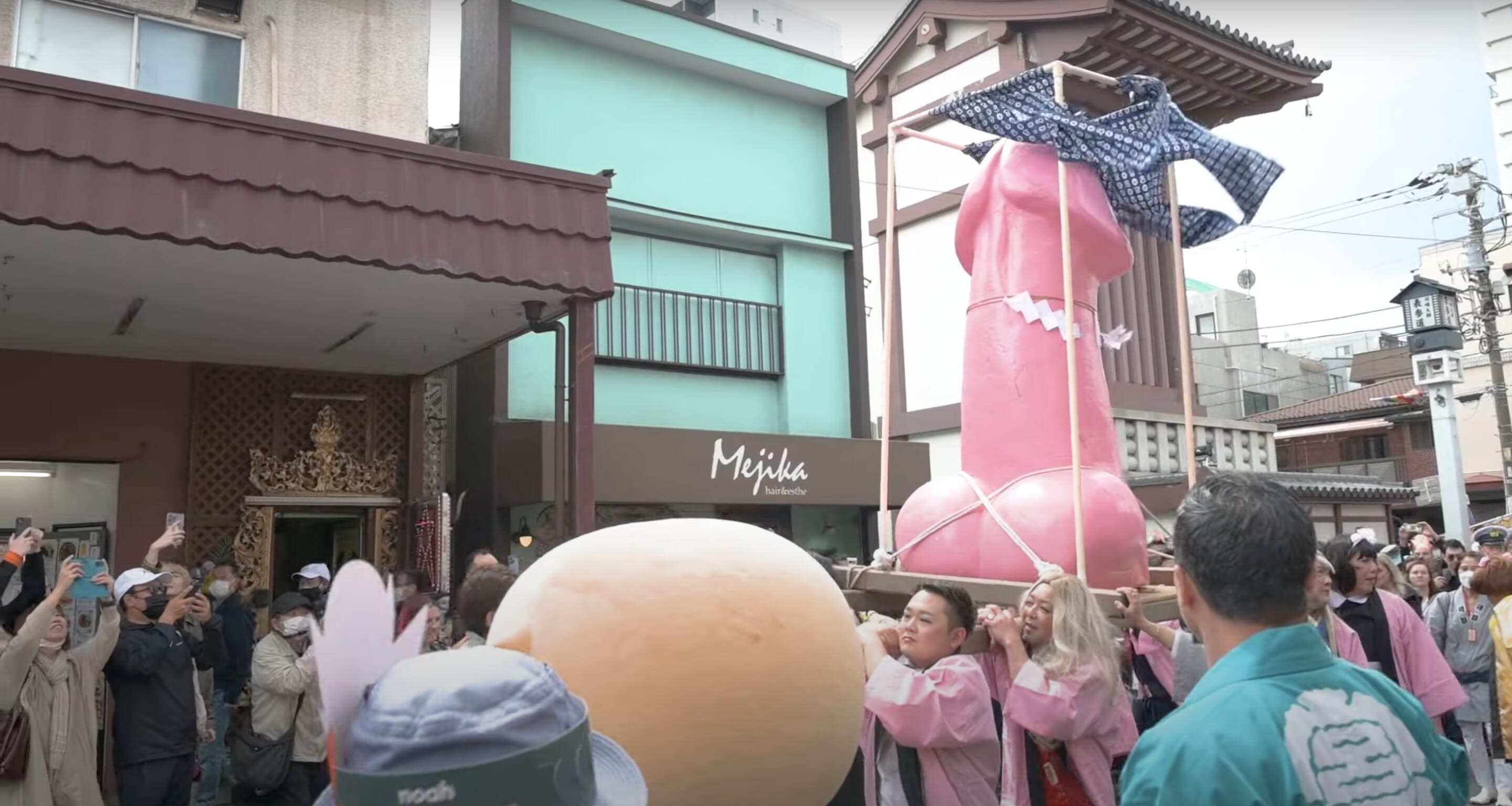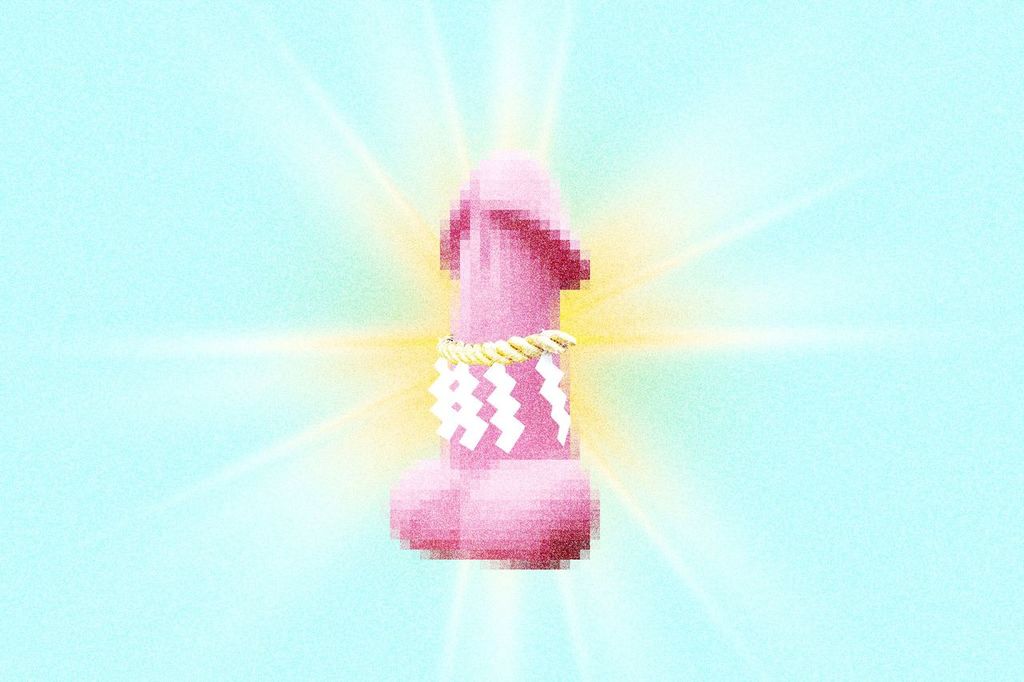Japan used to love a good, raunchy joke, with the “good” part often being optional. During the Edo period (1603 – 1868), a popular sub-genre of shunga — erotic woodprints ranging from pornography to educational materials, political satire and more — was the comedic yobutsu-kurabe, or “phallic contest.” They depicted real or fictional characters dropping their pants to see who had the biggest penis.
There’s also a portrait by Utagawa Kuniyoshi showing a parody of a gokaicho ceremony where temples would, on special days, exhibit their secret treasures, which in Utagawa’s shunga are replaced by a prostitute spreading her legs. But not every piece of X-rated Japanese art was meant to titillate or amuse. Some were, in fact, serious windows into the world of Japan’s unique form of genitalia worship.

Funny Bits: Not Always a Laughing Matter
A popular souvenir from Kyoto’s Fushimi Inari Taisha shrine — famous for its long line of torii gates — used to be a clay figure depicting a man in formal samurai clothing with a penis for a head. It was considered a talisman for attracting wealth and familial happiness, and it was often given as a gift when professing love or proposing marriage.
The souvenir, which has fallen out of use in recent years, is in the same league as a wood print by Utagawa Toyokuni depicting a deity with a penis head, penis nose and labia earrings, sitting in a vagina-shaped cave in front of penises bobbing in the sea. While both undoubtedly elicit laughter today, back in the day, they were considered serious art, part of Japan’s long tradition of venerating genitalia. There are many questions one might have about this or other sacred genitalia art, the chief one being why?
‘Our Phallicism is Different’
The worship of genitalia and their depictions, or “phallicism,” is hardly a Japanese invention. It’s appeared in almost every culture, from Ancient Rome and Greece to India, North America, China and beyond. It usually takes the form of crafting replicas of sex organs from stone, wood and metal to pray for fertility. And since fertility is a good thing, the fake penises and vaginas eventually become talismans meant to bring their owner other good things such as bountiful harvests while protecting them from non-good things like evil spirits. It all sounds pretty straightforward, except that’s not the full story with Japanese phallicism.
Japanese genitalia worship may have started with the Dosojin, a deity of travelers and boundaries, whose statues were set at entrances to villages and came in the shape of a married couple or a phallus. Over time, the Dosojin faith was mixed with that of the Wagojin, a pair of Chinese gods said to bring happiness to married couples. The Wagojin quickly became very popular in Japan (especially among commoners), where they were often depicted with genitalia heads. Part of it was because the pair symbolized harmony between men and women, but there is a deeper reason here.
Some shunga researchers propose that by combining the divine (gods) with the human (genitals), people of old Japan were trying to bridge the gap between the two realms, sort of anchoring deities to the physical world through a symbol that represents the totality of human existence. Apparently, that symbol is genitalia.

The Genital Gods Still Walk Among Us
Every few years or so, the internet has a laugh over pictures of Kanayama Shrine’s Kanamara Festival in Kawasaki city and its procession of sacred phalluses. Once popular with sex workers and today used to help spread awareness of AIDS and venereal diseases, the celebration is a continuation of the age-old practice of Japan’s genital worship, even if it has changed over time.
An undated shunga depicts a Kanamara Festival from days gone by where naked worshipers sit around a giant wooden phallus, suggesting that the event could have once been celebrated in the buff. You also won’t find ema prayer plaques with pictures of genitalia-faced deities for sale anymore, or metalworkers dedicating metal-cast genitalia figures to the shrine.
A long time ago, someone decided that ejaculations and bellows stoking the fire of forges are basically the same thing, metaphorically speaking, which is how the Kanayama Shrine’s sex god Konseishin has, over time, also become the god of metalworkers. The craftspeople worshiped the deity with metal genitalia offerings to Kanayama as recently as the 1960s, but then social norms changed and that mostly stopped.
It’s said, though, that artisans still create these offerings in private. And, of course, there are other festivals besides the Kanamara one that venerate genitals to this day. For example, the Tenteko Festival in Nishio, Aichi Prefecture, is a celebration praying for bountiful harvests that uses daikon radishes as stand-ins for penises.
So, essentially, Japan’s millennia-old genitalia worship never actually went anywhere. It was simply scaled down, dressed up, or taken behind a curtain where it has continued to flourish to this day.









